Steel reinforcement has one of the critical roles in the design, strength, and sustainability of the structure. Because of the characteristics of steel and concrete (tensile and compressive strength, molding ability), the combination of steel bar with concrete gives stability and strength to the concrete structure, enabling specialized designs like cantilevered structures, thinner & less supported concrete slabs, etc.
A structured design, its performance, and sustainability largely depend on the right and precise positioning of the steel-reinforced bar. The placing dra wings detail and specifies the reinforcement position, the required number of bars, bar length, and bends.
The accurate placement of reinforced bar briefs the right amount of concrete cover that helps in protecting the bars from corrosion and developing the strength of the concrete structure. This is the reason, apart from precise Rebar Detailing services, the accurate placement of steel rebar is critical for structure design and avoids any structural failure. It is the responsibility of the ironworker, foreman, contractor, and inspector to supervise and assure proper placement of Steel rebar.
Steel Rebar placement
A mesh of steel wires or a steel bar, when massed as reinforcing steel or reinforcement steel, is called Steel Rebar. Steel rebar is used in reinforced concrete and masonry structures to strengthen.
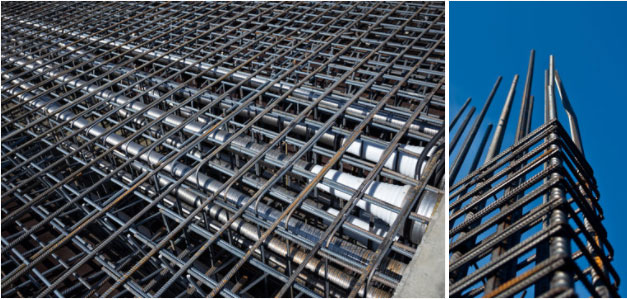
Reinforced can withstand high compressive forces, but it breaks under tension, as it has low tensile strength and requires reinforcement. The high tensile strength of Rebar makes it ideal for casting with a concrete structure. It strengthens the building structure by increasing its tensile strength and ability to carry tensile loads. A steel-reinforced concrete structure can withstand high tension and doesn’t break easily, as observed in large building structures.
The steel rebar is fabricated and placed in the form of rebar cages with bar supports, concrete, or plastic rebar spacers. These spacers separate the steel rebar from the concrete framework that forms the concrete cover for proper embedment. These rebar cages are joined together by spot welding, steel wire, electric rebar tier, or even with mechanical connections.
Stirrups form the outer part of the rebar cage it is placed regularly along a column or beam to secure the position of structural rebar, during concrete placement. It also helps in increasing the shear capacity of reinforced concrete.
Reinforcement also gets placed in the form of rolls, known as roll enforcement system where large quantity is required. It is a cost-effective and time-saving practice, as it is usually prepared off-site and unrolled on site. And it is widely used for slabs, walls, ramps, wind energy mass foundations, etc.
Importance of precise Steel Rebar placement
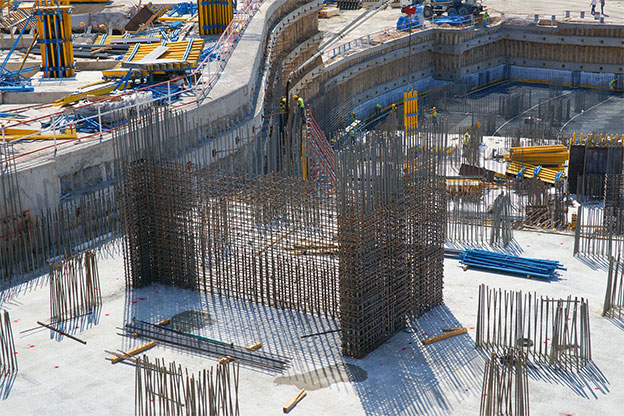
Precise and proper placement of Steel Rebar is critical for the strength and life of a structure. A failed structure is the outcome of improper rebar placement. And a failed structure not just marks the collapse of a structure if a structure does not perform as expected or designed, then that is also the failure of the structure. For example, if a bridge deflects more than its tolerance level when in use, it shows an unsuccessful or failed structure. Even costly repairs and early replacement of the structure parts are the sign of a failed structure.
The below mentioned several aspects of reinforcement placement brief the importance of a precise and proper steel rebar placement.
Concrete Encasement
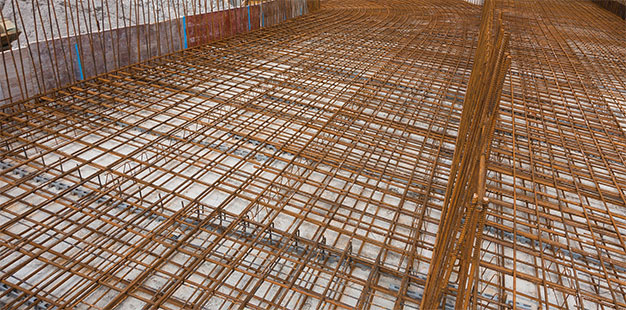
The right amount of concrete encasement is essential for the sustainability of the structure concrete cover saves steel rebar from exposure to deicing materials that lead to corrosion. Corrosion of steel rebar increases the diameter of steel due to which concrete outside the steel falls off or loosens from the reinforced steel leading to a weak structure. If less amount of concrete cover leads to corrosion, an excess amount of concrete cover also reduces the structural strength due to the flexural design theory.
Tolerance on rebar position
While placing the rebar as per the placing drawings, there is always a little variation or difference. According to ACI 117, tolerance is the permitted variation or deviation from the given dimension, i.e., the difference between the placed position of rebar and the position defined in the drawings.
For example, if the distance between the outside surface of a reinforcing bar and the face of the concrete beam with a width of 6 inches is defined to be 2 inches, then the permitted tolerance is to be not less than 1 5/8 inches. In the case of longitudinal bars, tolerance is about ±3 inches.
Positioning of rebar
The design of a structure is mostly dependent on rebar positioning. If you lower the top bars or raise the bottom bars even by half-inch more than required in the 6-inch slab, it can reduce the load-carrying capacity of the structure by 20%.
Reinforcing bar supports must be used wherever required. Use supports made of steel wire, precast concrete, or plastic that comes in various heights and support reinforcing bar of specific sizes and positions.
Methods of Rebar placement
The two general Steel placement methods used for continuously reinforced concrete pavement are the Manual method and Mechanical Method.

Manual method
The manual method is performed by placing the reinforced steel by hand before placing the concrete on it the reinforcing steel is supported by a chair or small metal to achieve the required height of the steel in the slab.
Stepwise manual placement of steel reinforcement is –
- Step 1: Placement of transverse bars with the help of supports or chairs.
- Step 2: Putting the longitudinal bars on top
- Step 3: Tie the longitudinal bars with the transverse bars at every 1.2m to 1.8 m distance.
It is easy to monitor the placement of bars, height, and lap distance with the manual method.
Mechanical method
The development of mechanical methods for rebar placement has fastened the process where contractors can lay 6000ft or more reinforcement in less than ten days. This method of rebar placement got grouped into two categories, i.e., mesh depressors and bar placers. The purpose behind developing mesh depressors was to place the reinforcement in one lift. Bar Placers group uses bar vibrator machines, tube assembly, and rebar installer equipment for rebar placement.
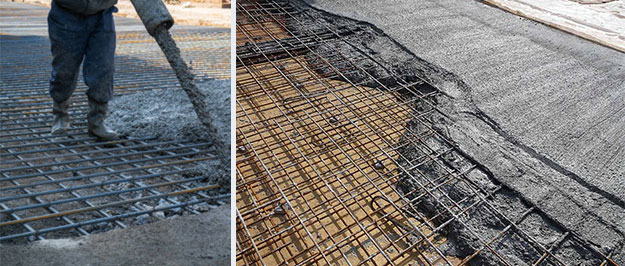
Most of the equipment picks the reinforcement with a spreader or placer attachment, hold them at a preset depth while PCC (Portland Cement Concrete) is poured around it.
CRCP pavements get placed in two lifts firstly, the bottom layer of the paving material gets settled or fixed, followed by the placement of reinforced bars. The process is complete after the second PCC lift.
Many variations are observable through the Mechanical placement of rebar a longitudinal deviation of ± 75 mm is spotted in the vertical plane when tube feeders are used to position the steel.
Best practices for steel rebar placement
CRSI, the Concrete Reinforcing Steel Institute, is a technical institute and standards developing organization for information related to steel reinforced concrete construction. The organization has released its 10th edition for placing reinforcing bars and set new standards for stainless steel fabrication. For steel rebar placement CRSI has covered topics such as security precautions, general principles of bar placing, splicing and tying, reinforcing bar bend shapes extended, rebar fabrication tolerance, revised coverage of bar supports, etc.
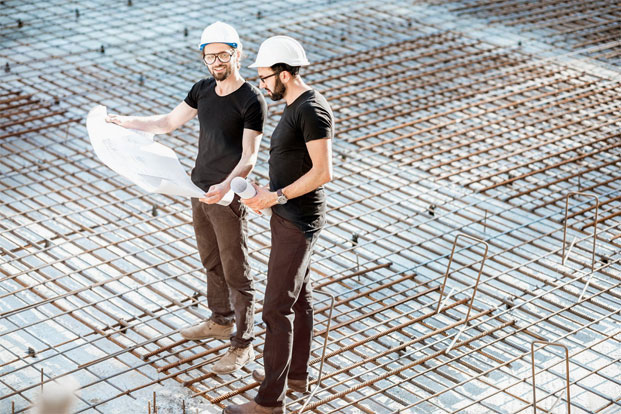
Some best practices in-lined to the CRSI standards that need to follow to optimize the bond between steel and concrete and reinforcement placement are:
Follow placing drawings
The placing drawings for reinforcing bars are the set of instructions developed by engineers, contractors, and ironworkers who need to follow the instructions while placing the reinforcing bars to build a structure that resists the anticipated loads.
Bar spacing
The placing drawing specifies where the reinforcement is placed the ironworkers should go through the structural and placing drawings before the placement of reinforcement bars and relate it to the overall structure.
Bar Supports and it’s spacing
Bar supports hold the reinforcement bars while placing the concrete over it and reach the concrete cover at a certain depth that secures the bars from corrosion. The range of bar supports is from plain concrete blocks to all-plastic chairs and to wire bar supports. These bar supports are not designed or intended for construction equipment like concrete pumps, buggies, or laser screeds.
Bar support spacing is dependent on the size of the reinforcement bar it is supporting. For example, for support of a one-way slab with #5 temperature shrinkage bars, we should use high chairs at 4 feet in the center. Whereas, for 4 bars, place high chairs at 3 feet in the center.
Concrete placement
Avoid the ill practice of hooking, the placing of reinforcement on the subgrade, and pulling it during concrete placement or settlement in slab construction. The reinforcement bars should not be adjusted when concrete is settled or fixed, and reinforced bars not placed on concrete layers.
Acceptable deviation or tolerance
In the case of walls and slabs, the deviation should be ±3 inches. For Stirrups, a deviation value of 1/12th of the depth of beam (in inches) is acceptable and for the ties, 1/12th of the column (in inches).
Bar tying
To hold and secure the rebar in place, they should be tied together using wires. Some of the ways of tying are snap tie (for rebar in flat horizontal position), wrap and snap tie (vertical wall reinforcement), saddle tie (column corner bars & stirrups to beam corner bars), and figure-eight tie (for heavy mats).
Expert assistance for rebar placement from eLogicTech
eLogicTech has been a rebar services provider for years. With a full-fledged team of engineers providing BIM, architectural, civil, structural engineering services, eLogicTech Solutions has a holistic approach towards building ideal steel-concrete structures. The professional Rebar placement on our value-proposition to Rebar detailing on 2D & 3D Platform with accurate estimation services and the team of technical and qualified experts, help in achieving sustainable and corrosion-resistant steel structures. Their rich experience in handling several projects and providing services from developing rebar placement drawings to final rebar placement can help achieve a building structure that you would always proud of. Let’s do it with technology – contact us.







